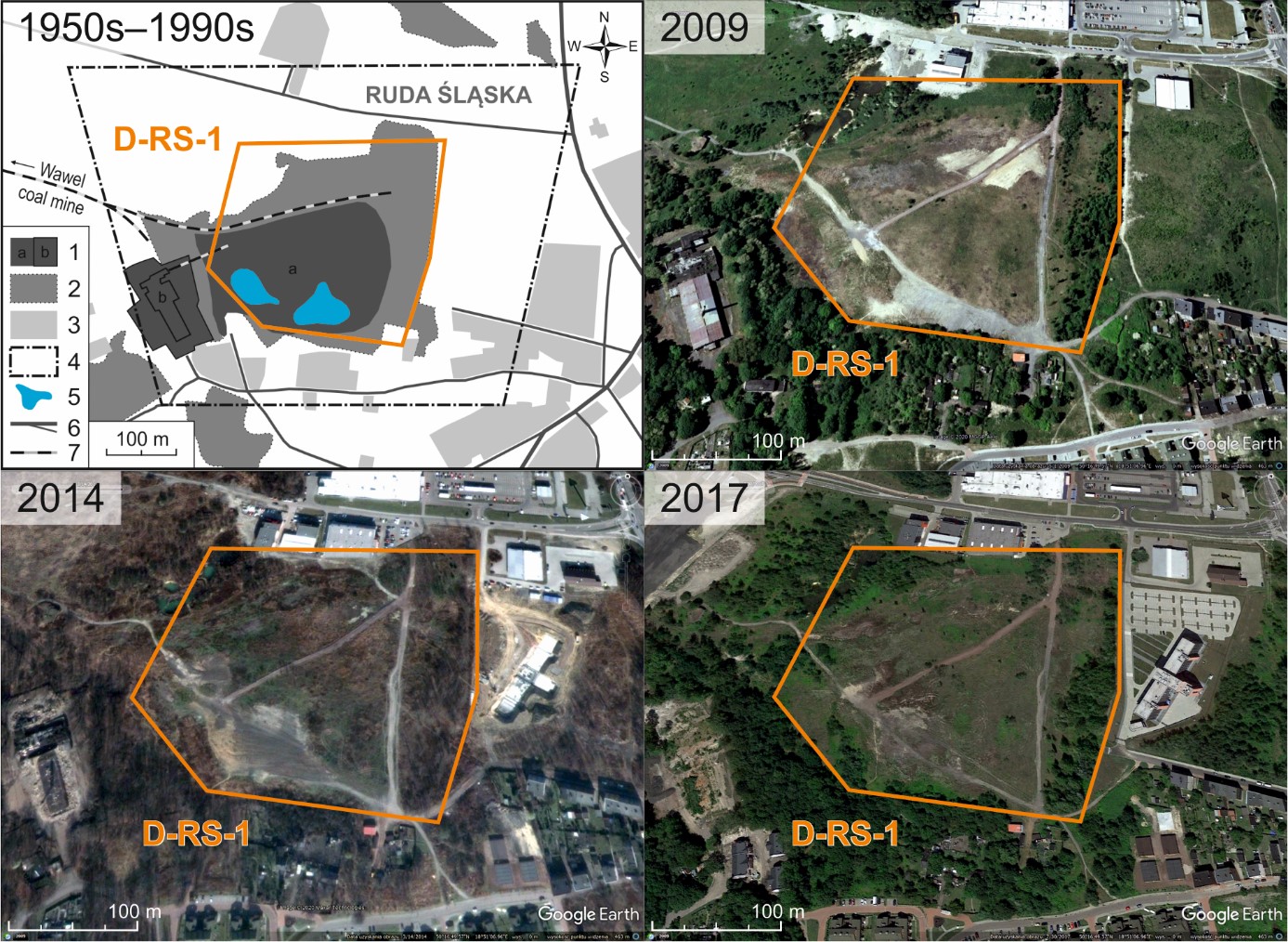Researchers from the Institute of Earth Sciences of the University of Silesia published in the journal “Land” the research results on environmental changes in terms of land use and vegetation on self-heating coal-waste dumps. In the study, spatiotemporal analysis of relief and land cover was carried out in the selected dumps in the Upper Silesian Coal Basin, and thermally active zones were identified. The results showed that the diversity of flora depends on the presence of a mosaic of microhabitats (often of an extreme nature) and the nature of the surrounding vegetation. The dynamics of succession on burning coal-waste dumps depends on the stage of the fire, the topography, and the type of substrate. The studied environmental changes are significant from the perspective of applied research and monitoring of post-industrial areas.
Abramowicz, A.; Rahmonov, O.; Chybiorz, R. Environmental Management and Landscape Transformation on Self-Heating Coal-Waste Dumps in the Upper Silesian Coal Basin. Land 2021, 10, 23. https://doi.org/10.3390/land10010023

Changes in land cover on the dump in Ruda Śląska (D-RS-1): 1a: clay pit in the 1990s, 1b: brickyard in the 1950s–1990s, 2: clay pit in the 1950s–1980s, 3: other buildings in the 1990s, 4: orthophotomaps range, 5: surface water in the 1990s, 6: roads in the 1990s, and 7: railways in the 1990.





